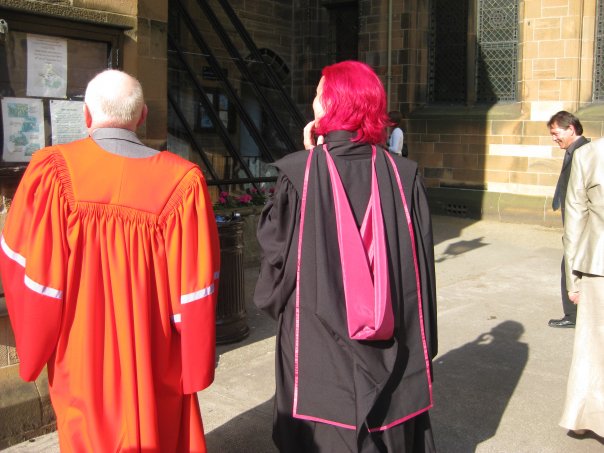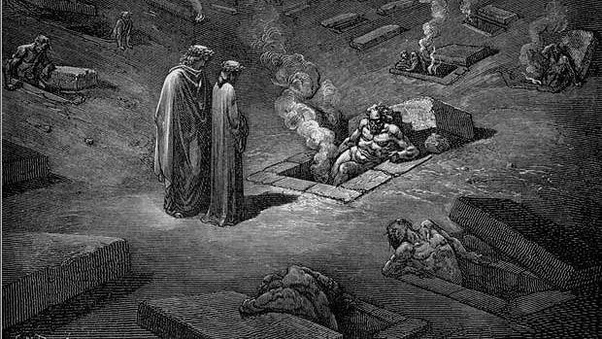|
Giuseppe Antonio Sassi
Giuseppe Antonio Sassi, (28 February 167521 April 1751), was an Italian librarian and literary scholar. Biography Giuseppe Antonio Sassi was born in Milan on February 28, 1675, to a patrician family. After completing his studies, he joined the congregation of the Oblates of Saints Ambrose and Charles and taught literature. After receiving his doctorate at the Ambrosian College, he was appointed rector in 1711 and curator of the famous library founded by Cardinal Federico Borromeo. Sassi took an active part in the most important literary undertakings. He contributed to the publication of Muratori's ''Rerum italicarum Scriptores'' with notes and essays and with transcripts from the manuscripts in the Ambrosian library, including ''History of the Goths'' by Jordanes, the ''Chronicles'' of Landulf the Younger, Ottone & Acerbo Morena's ''City of Lodi'', the ''Life of Dolcino'', a Novarese heresiarch, and of the ''History of the Visconti'', by Galvano Fiamma. He also revised and ... [...More Info...] [...Related Items...] OR: [Wikipedia] [Google] [Baidu] |
Doctorate
A doctorate (from Latin ''doctor'', meaning "teacher") or doctoral degree is a postgraduate academic degree awarded by universities and some other educational institutions, derived from the ancient formalism '' licentia docendi'' ("licence to teach"). In most countries, a research degree qualifies the holder to teach at university level in the degree's field or work in a specific profession. There are a number of doctoral degrees; the most common is the Doctor of Philosophy (PhD), awarded in many different fields, ranging from the humanities to scientific disciplines. Many universities also award honorary doctorates to individuals deemed worthy of special recognition, either for scholarly work or other contributions to the university or society. History Middle Ages The term ''doctor'' derives from Latin, meaning "teacher" or "instructor". The doctorate (Latin: ''doctoratus'') appeared in medieval Europe as a license to teach Latin (''licentia docendi'') at a university. Its ... [...More Info...] [...Related Items...] OR: [Wikipedia] [Google] [Baidu] |
Heresiarch
In Christian theology, a heresiarch (also hæresiarch, according to the ''Oxford English Dictionary''; from Greek: , ''hairesiárkhēs'' via the late Latin ''haeresiarcha''Cross and Livingstone, ''Oxford Dictionary of the Christian Church'' 1974) or arch-heretic is an originator of heretical doctrine or the founder of a sect that sustains such a doctrine. Examples * Marcion, the founder of Marcionism * Arius, the founder of Arianism * St. Augustine refers to Mani, the founder of Manichaeism, as a heresiarch. * Menocchio, an Italian miller who was burned at the stake in 1599 * Catholics, especially traditionalist Catholics such as Hilaire Belloc, consider Martin Luther, John Calvin, and other leaders of the Protestant Reformation to be arch-heretics. * Conversely, some fundamentalist Protestants (including Alexander Hislop and Charles Chiniquy) have used the term to refer to the papacy and the members of the Roman Curia. * Martin of Armenia, the fictional founder of the Old ... [...More Info...] [...Related Items...] OR: [Wikipedia] [Google] [Baidu] |
Claudius Salmasius
Claude Saumaise (15 April 1588 – 3 September 1653), also known by the Latin name Claudius Salmasius, was a French classical scholar. Life Salmasius was born at Semur-en-Auxois in Burgundy (region), Burgundy. When Salmasius was sixteen, his father - a counsellor of the parlement of Dijon - sent him to Paris, where he became intimate with Isaac Casaubon (1559–1614). In 1606 he went to the University of Heidelberg, where he studied under the jurist Denis Godefroy, and devoted himself to the classics, influenced by the librarian Jan Gruter. Here he embraced Protestantism, the religion of his mother. Returning to Burgundy, Salmasius qualified for the succession to his father's post, which he eventually lost on account of his religion. In 1623 he married Anne Mercier, a Protestant woman of a distinguished family. After declining overtures from University of Oxford, Oxford, University of Padua, Padua and University of Bologna, Bologna, in 1631 he accepted the professorship formerly h ... [...More Info...] [...Related Items...] OR: [Wikipedia] [Google] [Baidu] |
Typography
Typography is the art and technique of Typesetting, arranging type to make written language legibility, legible, readability, readable and beauty, appealing when displayed. The arrangement of type involves selecting typefaces, Point (typography), point sizes, line lengths, line spacing, letter spacing, and Kerning, spaces between pairs of letters. The term ''typography'' is also applied to the style, arrangement, and appearance of the letters, numbers, and symbols created by the process. Type design is a closely related craft, sometimes considered part of typography; most typographers do not design typefaces, and some type designers do not consider themselves typographers. Typography also may be used as an ornamental and decorative device, unrelated to the communication of information. Typography is also the work of graphic designers, art directors, manga artists, comic book artists, and, now, anyone who arranges words, letters, numbers, and symbols for publication, display, ... [...More Info...] [...Related Items...] OR: [Wikipedia] [Google] [Baidu] |
Angelo Calogerà
Angelo Calogerà, also known as Domenico Demetrio Calogerà, (, Padua — 29 September 1766, Isola di San Michele) was an Italian Benedictine monk and writer, active in popularizing literature and science. Life Angelo was born Domenico Demetrio Calogerà circa September 7, 1696, in Padua, Republic of Venice, to Don Liberale Calogerà of Corfu and Giustina Labarvellon. His father was a member of the aristocratic Calogerà family and had distinguished himself in the War of Cyprus against the Ottoman Empire in the 1570s; eventually, he settled in Padua, held several administrative posts there, and finally moved to Venice and gained Venetian citizenship. In 1716 Angelo became a Camaldolese monk, initially as librarian of the San Michele di Murano and later as prior of San Giorgio Maggiore. In 1728, at the peak of Antonio Vallisneri's renown, Calogerà began publishing ''Raccolta d'opuscoli scientifici e filologici'', followed in 1755 by ''Nuova raccolta d'opuscoli scientifici e f ... [...More Info...] [...Related Items...] OR: [Wikipedia] [Google] [Baidu] |
Journal Des Sçavans
The (later renamed and then , ), established by Denis de Sallo, is the earliest academic journal published in Europe. It is thought to be the earliest published scientific journal. It currently focuses on European history and premodern literature. History The first issue appeared as a twelve-page quarto pamphlet on Monday, 5 January 1665. This was shortly before the first appearance of the ''Philosophical Transactions of the Royal Society,'' on 6 March 1665. The 18th-century French physician and Encyclopédistes, encyclopédiste Louis-Anne La Virotte (1725–1759) was introduced to the journal through the protection of chancellor Henri François d'Aguesseau. Its content originally included obituaries of famous men, church history, scientific findings, and legal reports. Natural philosophy was part of its original scope. It is thought to be the first published scientific journal. The journal ceased publication in 1792, during the French Revolution, and, although it very briefly ... [...More Info...] [...Related Items...] OR: [Wikipedia] [Google] [Baidu] |
Girolamo Tiraboschi
Girolamo Tiraboschi (; 18 December 1731 – 9 June 1794) was an Italian literary critic, the first historian of Italian literature. Biography Born in Bergamo, he studied at the Jesuit college in Monza, entered the order, and was appointed in 1755 professor of eloquence in the University of Milan. There he produced (1766–1768) ''Vetera humiliatorum monumenta'' (3 vols), a history of the extinct order of the Humiliati, which made his literary reputation. Nominated in 1770 as librarian to Francis III, duke of Modena, he turned to account the copious materials there accumulated for the composition of his ''Storia della letteratura italiana''. This vast work, in which Italian literature from the time of the Etruscans to the end of the 17th century is traced in detail, occupied eleven years, 1771–1782, and the thirteen quarto volumes embodying it appeared successively in Modena Modena (, ; ; ; ; ) is a city and ''comune'' (municipality) on the south side of the Po Valley ... [...More Info...] [...Related Items...] OR: [Wikipedia] [Google] [Baidu] |
Pliny The Younger
Gaius Plinius Caecilius Secundus (born Gaius Caecilius or Gaius Caecilius Cilo; 61 – ), better known in English as Pliny the Younger ( ), was a lawyer, author, and magistrate of Ancient Rome. Pliny's uncle, Pliny the Elder, helped raise and educate him. Pliny the Younger wrote hundreds of letters, of which 247 survived, and which are of some historical value. These include 121 official memoranda addressed to Emperor Trajan (reigned 98-117). Some are addressed to reigning emperors or to notables such as the historian Tacitus. Pliny served as an imperial magistrate under Trajan, and his letters to Trajan provide one of the few surviving records of the relationship between the imperial office and provincial governors. Pliny rose through a series of civil and military offices, the ''cursus honorum''. He was a friend of the historian Tacitus and might have employed the biographer Suetonius on his staff. Pliny also came into contact with other well-known men of the period, includi ... [...More Info...] [...Related Items...] OR: [Wikipedia] [Google] [Baidu] |
Benedetto Bacchini
Benedetto Bacchini (born Bernardino Bacchini, 31 August 1651 – 1 September 1721) was an Italian Benedictine monk and scholar. Biography Bacchini was born on 31 August 1651, at Borgo San Donnino, in the Duchy of Parma. He studied at the Jesuit institution, and entered the Order of St. Benedict in 1668, when he took the praenomen ''Bernardino''. Prepared by his studies, he devoted his attention to preaching. Having become secretary of the abbot of St. Benedict of Ferrara, he accompanied him to Venice, Piacenza, Parma, and Padua, and was known among the celebrated literati of the time. In 1683 he devoted himself entirely to the study of literature. In 1688 he became theologian of the duke of Parma, who desired to secure a man of such merit. In 1689 he introduced into the regulations of the Benedictine Order of St. Alexander of Parma certain modifications, which resulted in his being obliged to leave Parma. The duke of Modena appointed him in 1691 counsellor of the Inquisition. ... [...More Info...] [...Related Items...] OR: [Wikipedia] [Google] [Baidu] |
Papenbroeck
Daniel Papebroch, , (17 March 1628 – 28 June 1714) was a Flemish Jesuit hagiographer, one of the Bollandists. He was a leading revisionist figure, bringing historical criticism to bear on traditions of saints of the Catholic Church. Life Papebroch was born in 1628, the son of a wealthy merchant of Antwerp, then in the Duchy of Brabant, part of the Spanish Netherlands. He attended the Jesuit college in his hometown. He came from a pious family that had chosen Jesuit Jean Bolland as its spiritual director. Bolland took a great interest in Daniel's education and encouraged him to learn Greek and other languages and to study literary composition. From 1644 to 1646 Papebroch studied philosophy at Douai, after which he entered the novitiate of the Society of Jesus. He was ordained a Catholic priest in 1658. In 1659 Papebroch began his work with Bolland, in the scholarly study of the hagiography of the Catholic saints. About this time, the Jesuit superiors of the order relieved those ... [...More Info...] [...Related Items...] OR: [Wikipedia] [Google] [Baidu] |


